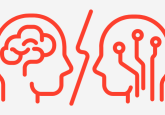Thou shalt not kill: artificial intelligence explores the influence of religion on xenophobic violence

A recent study used a new AI model to examine the factors that lead to xenophobia and violence in societies containing majority and minority populations with distinct religions.

Recent research conducted in a collaboration led by the University of Oxford (UK) has used a new form of AI to explore if it is in human nature to be naturally violent, or if factors such as religion lead to xenophobic tension and anxiety between different groups, which may then result in violence. The study found that people are not naturally violent but under a specific set of circumstances, often involving dissent from the core beliefs of the majority, they are capable of endorsing violence.
The experiment used a form of AI known as ‘multi-agent AI’ as opposed to the more familiar machine learning form. Justin Lane (University of Oxford), a co-author on the study explained: “Our study uses something called multi-agent AI to create a psychologically realistic model of a human, for example – how do they think, and particularly how do we identify with groups? Why would someone identify as Christian, Jewish or Muslim etc. Essentially how do our personal beliefs align with how a group defines itself?”
Using theories in cognitive psychology, the team programmed the AI to imitate human beings’ thought processes, allowing it to create individual ‘agents’ with different characteristics. Simulations were then created, each time with a majority and a minority group with distinct religious beliefs. Each simulation contained many variables, including the size difference between the two groups and the types of hazard that the agents in each simulation were exposed to, such as natural disasters, predatory risks, contagion and social hazards.
The results indicated that on the whole violence is not a natural part of our nature, in fact in most of the scenarios people bound together in times of crisis. The most common condition leading to extended periods of mutually escalating xenophobic tensions, however, was social hazards, particularly when members of the opposing groups began to deny the other’s core beliefs until the individual agents could no longer tolerate them and the size difference between the two groups was not too large. These periods of escalation only resulted in violence in 20% of occasions and were always as a result of an agent from outside or inside the group going against its core values.
“The root causes of things like religious violence rest in how our minds process the information that our world presents it,” explained Lane. “To use AI to study religion or culture, we have to look at modelling human psychology.”
These findings have secured funding for a two year project in Norway, where the research will help the Norwegian government to facilitate refugee integration and resettlement of Syrian refugees in Lesbos into Norway. The team also hopes to use the research to reduce conflict and stabilize societies in other areas of a world that is growing ever more multicultural.





